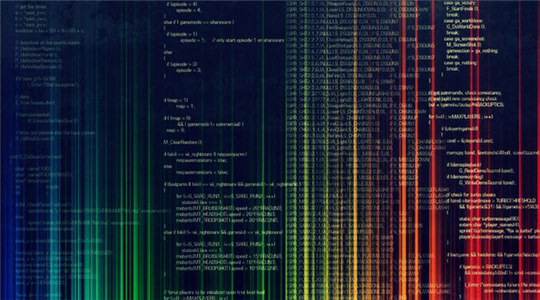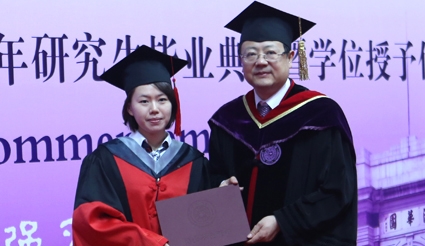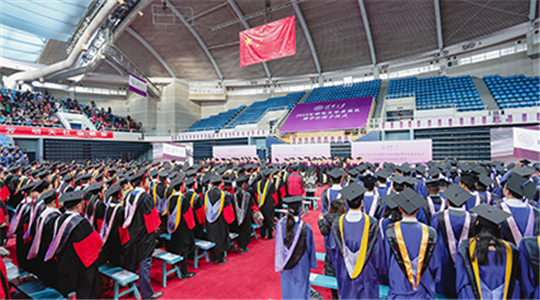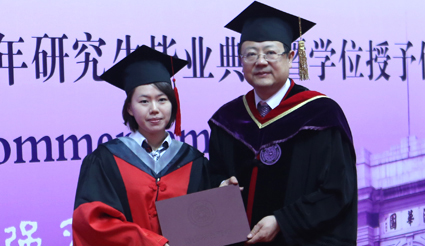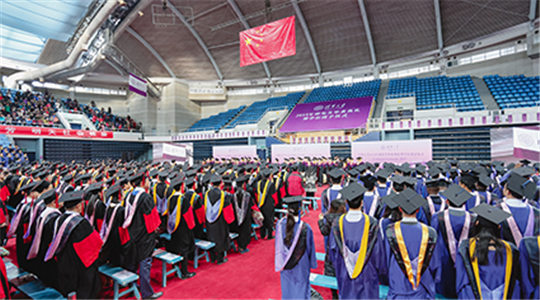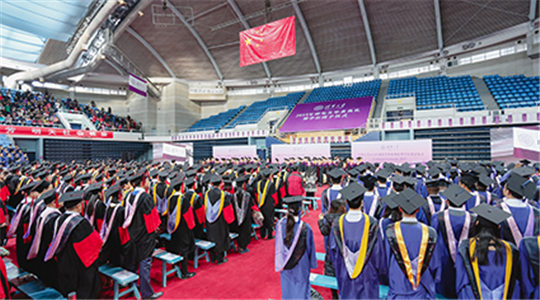
当前课程知识点:学术英语 > Module3 Academic Speaking > Extended reading > html
You Are When You Eat
Emily Laber-Warren
1 Jackie Rodriguez gained 70 pounds after her first child was born. Then, when her daughter was two, she dropped all the weight with practically no effort. The transformation had nothing to do with what Rodriguez ate. Her main adjustment was moving dinnertime almost four hours earlier. That single, simple change seems to have triggered Rodriguez’s dramatic weight loss — and emerging scientific evidence may explain why.
2 In labs around the world, researchers are developing a completely new understanding of how metabolism works. It seems that our bodies process food most efficiently when it’s eaten during daylight hours. “We now recognize that our biology responds differently to calories consumed at different times of day,” says Harvard neuroscientist Frank Scheer, PhD. That means a habit as harmless as eating at night, compared with eating calorically equivalent meals during the day, may cause people to gain weight.
3 Just look at Satchidananda Panda’s mice. A molecular biologist at the Salk Institute for Biological Studies in California, Panda is a leading expert on how the timing of food intake affects health. His team has found that mice that eat only during their active hours (the equivalent of daytime for humans) are drastically healthier and thinner than mice that eat the same amount of food scattered over 24 hours.
4 Encouragingly, when unhealthy, snack-around-the-clock mice are put on a strict schedule that allows them to eat only during their daytime, their diabetes and fatty liver disease improve and their cholesterol levels and inflammation markers diminish. “It’s likely we can reduce the severity (of disease) just by changing when people eat,” Panda says.
5 To understand the connection between meal timing and health, you have to go way, way back in history. The dramatic daily shifts between light and darkness on our planet because of sunrise and sunset have been incorporated into the biology of nearly every living thing. Our internal organs function differently during the day from how they do at night, in patterns known as circadian rhythms. Over the past few years, researchers have discovered that unnatural light exposure — such as staying up late amid the glare of a digital screen — disrupts these rhythms in ways that over time can lead to a host of illnesses.
6 But now experts have begun to suspect a second circadian clock in the body — organized around food, not light. Scientists still have much to learn about this food-based body clock, but evidence suggests that round-the-clock snacking may pose as much of a danger to our health as artificial light at night. Night eating has been implicated as a factor in diabetes, heart disease, cancer, and learning and memory problems.
7 Throughout evolution, daytime has been for nourishment and nighttime for fasting, and our organs have evolved accordingly. Digestive enzymes and hormones ebb and flow in a predictable pattern over the course of 24 hours, enabling the liver, intestines, and other digestive organs to function together as one well-oiled machine. Our modern world of late-night takeout and snack-filled pantries threatens to upend this calibrating role of food.
8 Compared with other kinds of diets, night fasting is simple. In a small pilot study, Ruth Patterson, PhD, a nutrition expert and epidemiologist at the University of California, San Diego, told women to eat dinner as early as 6 p.m. and definitely by 8 p.m. and not to eat again until eight in the morning, for at least 12 hours of “gut rest.” “(Fasting) they instantly understood,” Patterson says. “They didn’t have to change what they ate or how they cooked.”
9 The new research suggests that breakfast really is the most important meal of the day — but we need to embrace its original meaning: breaking a fast. The first meal of the day is most beneficial only if it comes after 12 to 14 hours of not eating or drinking, says Panda.
10 In addition to fasting at night, it’s beneficial to eat your main meal earlier in the day. In a 2013 study, Harvard’s Frank Scheer analyzed 420 dieters at weight-loss clinics. Participants ate the same number of calories and were equally active, but those who had their main meal before 3 p.m. lost significantly more weight than those who ate later. “To find such big differences in weight loss with just a slight difference in meal timing is quite remarkable,” says Scheer.
11 To many, the science of meal timing is nothing but common sense. Craig Weingard is a bodybuilding expert who for years has included nightly fasts among his recommendations. For the longest time, Weingard resisted. It seemed too painful to go to bed hungry. Finally, he tried it. “In a flash, my whole body changed. I literally can see it the next day when I look at my stomach if I didn’t eat after six,” he says. “Anything you eat after 6:15 p.m. becomes part of you.”
(803 words)
(Adapted from Reader’s Digest, May 2016: P44)
-Welcome to EAP course 欢迎学习“学术英语课程”
-Extended reading Unit 1
--html
--html
-Extended reading exercises
-1.1 Introduction to the module of listening skills 模块介绍
-1.2 Predicting the content 预测听力内容
--Video
--html
--图片全屏
--Audio
--html
--图片全屏
--html
--外部链接
-Module1 Listening--1.2
-1.3 Understanding main ideas: key words 抓住关键词理解大意
--Video
--html
--Video
--外部链接
-Module1 Listening--1.3
-1.4 Understanding supporting evidence (I): explicit means 理解支持性证据 (I):显性证据
--Video
--html
--图片全屏
--Audio
--外部链接
-Module1 Listening--1.4
-1.5 Understanding supporting evidence (II): implicit means 理解支持性证据 (II):隐性证据
--Video
--html
--Video
-Module1 Listening--1.5
-1.6 Recognizing rhetorical questions 辨别修辞问句
--Video
--html
--Video
-Module1 Listening——1.6
-1.7 Understanding the organization of a lecture (I): chronological order 理解讲座结构 (I):时间顺序
--Video
--html
--Video
-Module1 Listening--1.7
-1.8 Understanding the organization of a lecture (II): categorization 理解讲座结构 (II):归类
--Video
--html
--Video
-Module1 Listening--1.8
-1.9 Handling unfamiliar words 应对不熟悉词汇
--Video
--html
--Video
--html
-Module1 Listening--1.9
-1.10 Understanding vocabulary from the context 从上下文理解词汇
--Video
--html
--Video
--html
-Module1 Listening--1.10
-1.11 Focusing on numbers & statistics 注意数字与数据
--Video
--html
--Video
-Module1 Listening--1.11
-1.12 Recognizing analogy 辨别类比
--Video
--html
--Video
-Module1 Listening--1.12
-1.13 Recognizing signposting language (I): contrast 辨别指示性语言 (I):对比
--Video
--html
--Video
-Module1 Listening--1.13
-1.14 Recognizing signposting language (II): consequence 辨别指示性语言 (II):结果
--Video
--html
--Video
-Module1 Listening--1.14
-1.15 Recognizing signposting language (III): presenting factual information 辨别指示性语言 (III):陈述事实信息
--Video
--html
--Video
-Module1 Listening--1.15
-1.16 Note-taking: numbers & diagrams 记笔记:数字和图表
--Video
--html
--Video
--html
--Video
-Module1 Listening--1.16
-1.17 Summary to the module of listening skills 模块总结
--Video
-Module test
--Video
--html
--Module1 Academic Listening--Module test
-Extended reading
--html
--html
-Module1 Extended reading
-2.1 Introduction to the module of reading skills 模块介绍
--Video
-Module2 Reading--2.1
-2.2 Surveying an article 浏览文章
--Video
-Module2 Reading--2.2
-2.3 Skimming and scanning 查读和略读
--Video
-Module2 Reading--2.3
-2.4 Recognizing text organization / structure 识别文章结构
--Video
-Module2 Reading--2.4
-2.5 Identifying the author's evaluation 识别作者评价
--Video
-Module2 Reading--2.5
-2.6 Identifying the thesis statement 识别文章中心句
--Video
-Module2 Reading--2.6
-2.7 Increasing reading speed 提高阅读速度
--Video
-Module2 Reading--2.7
-Module test 2-1
--html
--外部链接
--html
--html
--图片全屏
--html
--html
--外部链接
-Module2 Academic Reading--Module test 2-1
-2.8 Guessing unfamiliar words from context 从上下文猜测词意
--Video
-Module2 Reading--2.8
-2.9 Recognizing topic sentence and supporting evidence 识别主题句和支持性证据
--Video
-Module2 Reading--2.9
-2.10 Understanding quotations 理解引语
--Video
-Module2 Reading--2.10
-2.11 Using questions for effective reading 使用问句促进阅读
--Video
-Module2 Reading--2.11
-2.12 Recognizing classification 识别分类
--Video
-Module2 Reading--2.12
-2.13 Recognizing comparison and contrast 识别比较和对比
--Video
-Module2 Reading--2.13
-2.14 Recognizing cause and effect 识别因果关系
--Video
-Module2 Reading--2.14
-2.15 Annotating the text 标记文章
--Video
-Module2 Reading--2.15
-2.16 Summary to the module of reading skills 模块总结
--Video
-Module test 2-2
--html
--外部链接
--html
--外部链接
--html
--外部链接
--Module2 Academic Reading--Module test 2-2
-Extended reading
--html
--html
-Module2 Extended reading
-3.1 Introduction to the module of speaking skills 模块介绍
--Video
--html
-Module3 Speaking--3.1
-3.2 Preparing for a presentation 准备陈述报告
--Video
-Module3 Speaking--3.2
-3.3 Opening a presentation 开始陈述报告
--Video
-Module3 Speaking--3.3
-3.4 Presenting the main body 陈述报告主体
--Video
-Module3 Speaking--3.4
-3.5 Concluding the presentation 结束陈述报告
--Video
-Module3 Speaking--3.5
-3.6 Evaluating students' presentation 评价学生的陈述报告
--Video
-Module3 Speaking--3.6
-Module test 3-1
--html
-Module3 Academic Speaking--Module test 3-1
-3.7 Opening a discussion; Agreeing and disagreeing 开始讨论;表达赞同与不赞同
--Video
-Module3 Speaking--3.7
-3.8 Keeping a discussion going; Discussing the pros and cons 保持讨论;支持与反对
--Video
-Module3 Speaking--3.8
-3.9 Interrupting politely; Asking for clarification or confirmation 客气地打断讨论;要求对方阐释或确认
--Video
-Module3 Speaking--3.9
-3.10 Expressing an opinion; Supporting an opinion 表达观点;支撑观点
--Video
--Video
-Module3 Speaking--3.10
-3.11 Evaluating students' group discussion 评价学生的讨论
--Video
-Module3 Speaking--3.11
-3.12 Summary to the module of speaking skills 模块总结
--Video
-Module3 Speaking--3.12
-Module test 3-2
--Module3 Academic Speaking--Module test 3-2
-Extended reading
--html
--html
--Module3 Extended reading
-4.1 Introduction to the module of writing skills 模块介绍
--Video
-Module4 Writing--4.1
-4.2 Writing an introduction 写文章开头
--Video
-Module4 Writing--4.2
-4.3 Writing a thesis statement 写文章中心句
--Video
-Module4 Writing--4.3
-4.4 Writing the main body 写文章主体
--Video
-Module4 Writing--4.4
-4.5 Writing a body paragraph 写主体段落
--Video
-Module4 Writing--4.5
-4.6 Writing a conclusion 写文章结论
--Video
-Module4 Writing--4.6
-4.7 Evaluating students' writing (structure) 评价学生的写作(结构方面)
--Video
-Module4 Writing--4.7
-Module test 2-1
--Module4 Academic Writing--Module test 2-1
-4.8 Writing in formal languge 用正式文体写作
--Video
--Video
-Module4 Writing--4.8
-4.9 Writing in cautious language 用谨慎的话语写作
--Video
--Video
-Module4 Writing--4.9
-4.10 Writing in efficient language 用简练的话语写作
--Video
--Video
-Module4 Writing--4.10
-4.11 Avoiding plagiarism (quoting, paraphrasing and summarizing) 避免学术抄袭(引用,改写,总结)
--Video
-Module4 Writing--4.11
-4.12 Avoiding plagiarism (acknowledging sources) 避免学术抄袭(注明出处)
--Video
-Module4 Writing--4.12
-4.13 Summary to the module of writing skills
--Video
-Module4 Writing--4.13
-Module test 2-2
--Module4 Academic Writing--Module test 2-2
-Extended reading
--html
--html
--Module4 Extended readinging
-5.1 Introduction to the module of translating skills
--Video
-Module5 Translating--5.1
-5.2 What is translation 什么是翻译
--Video
-5.3 How to get ready for translation? 怎样做好翻译的准备?
--Video
-Module5 Translating--5.3
-5.4 Word-for-word translation 逐字翻译
--Video
-Module5 Translating--5.4
-5.5 Diction (I): grammatical clues 词意的选择(I):语法线索
--Video
-Module5 Translating--5.5
-5.6 Diction (II): collocation clues 词意的选择(I):词汇搭配线索
--Video
-Module5 Translating--5.6
-5.7 Omission (I): leaving out unnecessary prepositions and conjunctions 省略法(I):删减不必要的介词和连词
--Video
-Module5 Academic Translating--5.7 Omissio
-5.8 Omission (II): leaving out unnecessary articles 省略法(II):删减不必要的冠词
--Video
-Module5 Translating--5.8
-5.9 Conversion (I): translating nouns as adjectives or verbs 词性转换(I):名词翻为形容词或动词
--Video
-Module5 Translating--5.9
-5.10 Conversion (II): translating verbs as nouns or adverbs 词性转换(II):动词翻为名词或副词
--Video
-Module5 Translating--5.10
-5.11 Addition (I): adding nouns 增词法(I):增加名词
--Video
-5.12 Addition (II): adding adjectives or adverbs 增词法(II):增加形容词或副词
--Video
-Module5 Translating--5.12
-5.13 Addition (III): adding verbs 增词法(III):增加动词
--Video
-Module5 Translating--5.13
-5.14 Addition (IV)): adding conjunctions 增词法(IV):增加连词
--Video
-Module5 Translating--5.14
-5.15 Translating relative clauses (I): as pre-modifiers 翻译关系从句(I):作为前置修饰语
--Video
-Module5 Translating--5.15
-5.16 Translating relative clauses (II): as post-modifiers 翻译关系从句(II):作为后置修饰语
--Video
-Module5 Translating--5.16
-5.17 Translating relative clauses (III): merging 翻译关系从句(I):合并
--Video
-Module5 Translating--5.17
-5.18 Translating relative clauses (IV): dividing 翻译关系从句(I):分裂
--Video
-Module5 Translating--5.18
-5.19 Translating passive constructions (I): as active constructions 翻译被动结构(I):翻为主动结构
--Video
-Module5 Translating--5.19
-5.20 Translating passive constructions (II): as passive constructions 翻译被动结构(I):翻为被动结构
--Video
-Module5 Translating--5.20
-5.21 Evaluating students' translation 评价学生的翻译作品
--Video
-Module5 Translating--5.21
-5.22 Summary to the module of translating skills 模块总结
--Video
-Module5 Translating--5.22
-Module test
--Module5 Academic Translating--Module test
-Extended reading
--html
--html
-Module5 Extended reading


